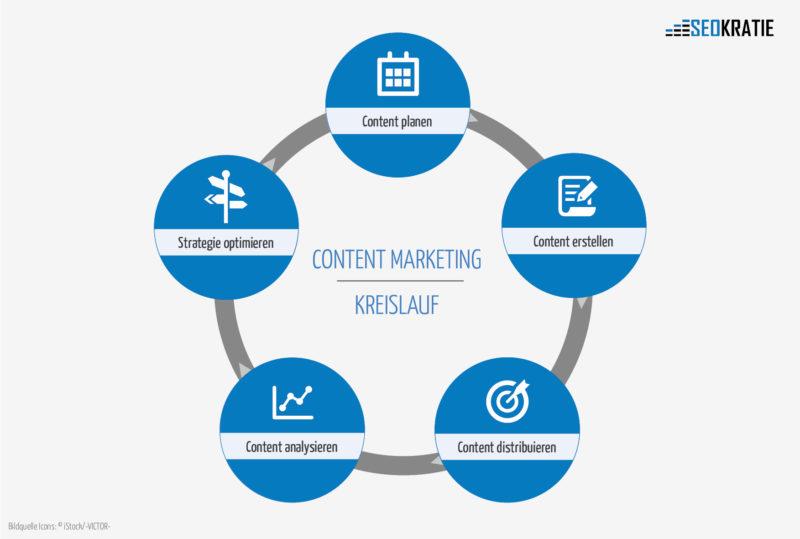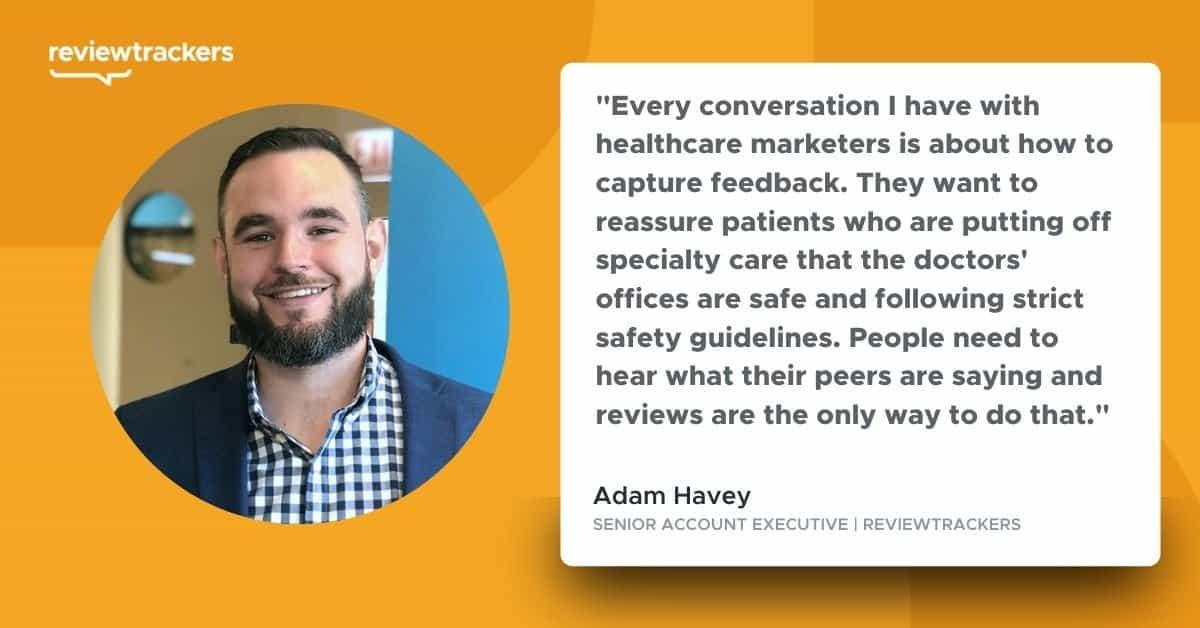In today’s digital age, SEO is vital for healthcare practices. It enhances visibility, connects patients with vital information, and builds trust. Embrace SEO to ensure your practice thrives, reaching those who need your care most. Transform lives, one search at a time!
Is SEO Important for Healthcare Practices?
In the rapidly evolving digital landscape, the question of whether search engine optimization (SEO) is crucial for healthcare practices resonates with a profound significance. As patients increasingly turn to the internet for health-related information, the visibility of healthcare providers online can make all the difference between a thriving practice and one that struggles to connect with those in need. Imagine a world where every individual seeking medical advice, treatment, or support can easily find the right healthcare professional, empowered by the information they need at their fingertips. This is not just a dream; it’s the promise of effective SEO. By harnessing the power of SEO, healthcare practices can not only enhance their online presence but also cultivate trust, build patient relationships, and ultimately improve community health outcomes. Join us as we explore the vital role of SEO in transforming healthcare practices and ensuring that those who need care can find it effortlessly. The future of healthcare is digital; let’s make sure you’re leading the way.
The Crucial Role of SEO in Modern Healthcare
In the ever-evolving landscape of healthcare, where patients increasingly turn to the internet for their medical needs, the importance of SEO cannot be overstated. When potential patients search for services, clinics, or specialists online, they are looking for quick and trustworthy information. If your healthcare practice isn’t optimized for search engines, you risk being overshadowed by competitors who have embraced these strategies.
Here are a few compelling reasons why SEO is vital for healthcare practices:
- Increased Visibility: Effective SEO strategies improve your website’s visibility on search engine results pages (SERPs). By ranking higher, you attract more visitors, which translates to more potential patients.
- Enhanced Credibility: Patients often perceive higher-ranking websites as more credible and trustworthy. A strong presence on search engines can boost your practice’s reputation.
- Targeted Traffic: SEO allows you to target specific demographics and geographic areas, ensuring that you reach patients most likely to seek your services.
- Better User Experience: A well-optimized website provides a seamless experience for users, making it easier for them to find information, book appointments, or contact your practice.
Moreover, healthcare SEO isn’t just about incorporating keywords; it involves a comprehensive approach that includes:
- Optimizing website performance and speed
- Creating high-quality, relevant content that answers patient queries
- Utilizing local SEO strategies to attract nearby patients
- Building a robust backlink profile to enhance authority
To illustrate the impact of effective SEO, consider the following table showcasing the difference in traffic and patient inquiries before and after implementing an SEO strategy:
| Metrics | Before SEO | After SEO |
|---|---|---|
| Monthly Website Traffic | 500 Visits | 2,500 Visits |
| Patient Inquiries | 20 Inquiries | 100 Inquiries |
| Appointment Bookings | 10 Bookings | 60 Bookings |
Ultimately, investing in SEO is an investment in your practice’s future. By prioritizing your online presence, you not only enhance your visibility but also create a lasting connection with your community. In a digital-first world, the practices that adapt and optimize will thrive, ensuring they provide the best possible care to their patients.
Understanding the Digital Landscape of Patient Search Behavior
In the rapidly evolving digital landscape, understanding how patients search for healthcare information is crucial for practices aiming to thrive. Today’s patients are not just passive recipients of care; they are proactive seekers of information, utilizing a variety of online platforms to make informed decisions about their health. The way they interact with search engines reveals valuable insights into their priorities, preferences, and concerns.
Patients are increasingly turning to search engines like Google as their first point of contact for healthcare-related queries. This behavior underscores the importance of a strong online presence. A well-optimized healthcare website can significantly enhance visibility, making it easier for potential patients to find the services they need. When patients encounter a site that appears at the top of their search results, they are more likely to perceive it as credible and trustworthy.
To effectively capture patient attention, healthcare practices must be aware of the terms and phrases that potential patients are searching for. Some of the most common search behaviors include:
- Symptom searches: Patients often search for information related to specific symptoms before seeking professional advice.
- Provider searches: Many patients look for healthcare providers in their area, including reviews and ratings.
- Procedure information: Patients seek detailed information about procedures they might require, including risks and recovery times.
Leveraging these search behaviors can significantly enhance a practice’s online strategy. By integrating relevant keywords into website content, blogs, and FAQs, healthcare providers can align their services with the queries of potential patients. This not only improves search engine rankings but also creates a more informative experience for users, ultimately leading to increased patient engagement and trust.
Moreover, the digital landscape is not just about visibility; it’s also about building relationships. Engaging content that answers common patient questions can establish a practice as a reliable source of information. Consider incorporating elements such as:
- Educational blog posts: Address common health concerns and answer frequently asked questions.
- Video content: Utilize videos to explain procedures or introduce staff, making personal connections.
- Patient testimonials: Showcase real experiences to enhance credibility and trust.
Additionally, utilizing analytics tools can provide deeper insights into patient search behavior. Tracking metrics such as the most common search terms leading to your site, visitor demographics, and user engagement can inform future content creation and marketing strategies. By adapting to the evolving expectations of patients, healthcare practices can remain competitive and relevant.
understanding the digital behavior of patients is not merely a trend; it’s a necessity. By investing in SEO and creating a robust online presence, healthcare practices can not only attract more patients but also foster lasting relationships built on trust and transparency. Embracing the digital age opens doors to new opportunities, allowing practices to meet patients where they are – online.

How SEO Enhances Patient Engagement and Trust
In an era where information is at our fingertips, the role of search engine optimization (SEO) in healthcare cannot be overstated. By enhancing online visibility, SEO serves as a bridge between healthcare providers and potential patients, fostering trust and engagement through accessible, reliable information.
When patients search for medical information or services, they often gravitate toward the first few results on search engine results pages (SERPs). By optimizing your healthcare practice’s website for relevant keywords, you can:
- Increase Visibility: Appear in top search results, leading to more traffic.
- Establish Authority: Provide valuable, accurate content that positions your practice as a trusted source.
- Encourage Engagement: Create a seamless user experience that keeps visitors on your site longer.
Moreover, SEO is not solely about traffic; it’s about attracting the right audience. By leveraging local SEO strategies, your practice can connect with patients in your community. Optimizing for local searches ensures that when someone looks for healthcare services nearby, your practice comes up as a top contender. Consider incorporating:
- Google My Business Listings: Claiming and optimizing your listing can significantly increase local visibility.
- Location-Specific Keywords: Including geographic keywords can help potential patients find you more easily.
Building trust is crucial in the healthcare sector. When patients encounter a website that is easy to navigate, filled with informative content, and ranks high in search results, they are more likely to feel confident in the services offered. A well-structured site not only caters to user experience but also enhances credibility. Elements that contribute to this trust include:
- Quality Content: Well-researched articles and blog posts increase reliability.
- Patient Testimonials: Positive reviews and experiences validate your practice’s reputation.
- Secure Website Features: An SSL certificate reassures visitors that their data is safe.
Incorporating a patient-centric approach through informative blogs, FAQs, and resources can significantly boost patient engagement. By answering common health queries and providing relevant information, you create an environment where patients feel valued and understood. A simple table showcasing common health topics can guide patients to explore more about their concerns:
| Health Topic | Content Type | Target Audience |
|---|---|---|
| Nutrition Tips | Blog Post | General Public |
| Chronic Pain Management | Patient Guide | Chronic Pain Patients |
| Preventive Care | FAQ | All Patients |
Ultimately, the integration of SEO into your healthcare practice is about more than just search rankings; it’s about building a community of informed and engaged patients. As you enhance your online presence, you are not only increasing your visibility but also fostering relationships that are built on trust and reliability. Simplifying access to information empowers patients, encouraging them to take proactive steps in their healthcare journey.
The Connection Between SEO and Quality Patient Experiences
In today’s digital age, the relationship between search engine optimization (SEO) and patient experiences is more intertwined than ever. When healthcare practices invest in SEO, they are not merely optimizing their websites for search engines; they are enhancing the overall patient experience by making vital information more accessible and user-friendly.
Effective SEO strategies can lead to:
- Increased Visibility: A well-optimized website appears higher in search results, making it easier for potential patients to find essential services.
- Enhanced User Experience: SEO involves optimizing website structure and content, ensuring that users navigate effortlessly and find the information they need.
- Relevant Content Delivery: By targeting specific keywords, healthcare practices can share valuable content that answers common patient questions, thus fostering trust and credibility.
Moreover, a positive patient experience is not limited to just the interaction with healthcare providers; it extends to how patients perceive the entire journey, from finding a provider to booking an appointment. An intuitive website that loads quickly, is mobile-friendly, and contains engaging content can significantly influence a patient’s decision-making process. When patients feel informed and confident in their choices, they are more likely to choose your practice over competitors.
Consider the following table that illustrates the impact of SEO on various aspects of patient interaction:
| SEO Impact | Patient Experience Aspect |
|---|---|
| Higher Search Rankings | More patients discover your practice |
| Improved Website Navigation | Simplified appointment booking process |
| Relevant Content Marketing | Patients feel informed and educated |
| Local SEO Optimization | Patients find nearby healthcare options easily |
Ultimately, is undeniable. By prioritizing SEO, healthcare practices empower themselves to create a more patient-centric environment. This investment not only attracts new patients but also strengthens relationships with existing ones, leading to increased loyalty and satisfaction. As the digital landscape continues to evolve, embracing SEO as a fundamental component of your practice’s strategy is no longer an option; it is a necessity for providing exceptional care in a competitive market.

Optimizing Your Practices Website for Local Searches
In today’s digital age, ensuring your healthcare practice is easily discoverable through local searches is paramount. With the majority of patients turning to the internet to find services, optimizing your website is essential for attracting local clientele. Here are some effective strategies to enhance your online presence:
- Google My Business: Claim and optimize your Google My Business (GMB) listing. This free tool allows you to manage how your practice appears in Google Search and Maps, providing essential information like your address, hours, and services.
- Local Keywords: Incorporate relevant local keywords throughout your website content. Think about the terms potential patients might use, such as “pediatrician in [City]” or “dentist near [Neighborhood].” Use these phrases naturally in your headings, meta descriptions, and body text.
- NAP Consistency: Ensure your Name, Address, and Phone Number (NAP) are consistent across all platforms including your website, social media, and online directories. This consistency builds trust with search engines and improves your rankings.
- Patient Reviews: Encourage satisfied patients to leave positive reviews on your GMB page and other platforms. Reviews not only enhance your credibility but also influence potential patients’ decisions.
Additionally, consider the technical aspects of your website. A fast-loading, mobile-friendly site is crucial, as many local searches are performed on mobile devices. Google’s mobile-first indexing means your website must provide a seamless experience for users on smartphones and tablets.
Utilizing local backlinks can also significantly boost your local SEO. Reach out to local organizations, health blogs, and community events to create partnerships that lead to valuable backlinks to your site. The more reputable sites that link back to you, the higher you’ll rank in local search results.
local content is king. Create blog posts or resources that address specific health concerns relevant to your community. This not only demonstrates your expertise but also provides valuable information that keeps visitors engaged and encourages them to share your content.
| Optimization Technique | Description |
|---|---|
| Google My Business | Enhance your visibility in local searches and provide essential information. |
| Local Keywords | Use location-based keywords to attract relevant traffic. |
| NAP Consistency | Ensure your contact information is uniform across all platforms. |
| Patient Reviews | Leverage testimonials to build trust and attract new patients. |
| Local Backlinks | Establish connections with local entities for better online authority. |

Leveraging Content Marketing to Educate and Attract Patients
In today’s digital landscape, healthcare practices face the challenge of standing out in a crowded marketplace. Content marketing provides a powerful avenue to not only attract potential patients but also to educate them about their health needs. By creating valuable and informative content, practices can position themselves as trusted authorities, fostering a sense of connection and confidence with their audience.
To effectively leverage content marketing, consider these strategies:
- Educational Blog Posts: Regularly publish articles that address common health concerns, treatment options, and wellness tips. This positions your practice as a knowledgeable resource.
- Patient Testimonials: Share stories and experiences from satisfied patients. Authentic testimonials can resonate with potential patients and build trust.
- Video Content: Create engaging videos that explain medical procedures, showcase your team, or provide health tips. Visual content often attracts more attention and keeps viewers engaged.
- Infographics: Use infographics to simplify complex medical information. They are visually appealing and can be easily shared on social media platforms, increasing your reach.
Additionally, implementing Search Engine Optimization (SEO) practices can amplify your content marketing efforts. By optimizing your content for search engines, you increase its visibility, making it easier for potential patients to find your practice online. Key SEO strategies include:
- Keyword Research: Identify keywords that potential patients are searching for and incorporate them naturally into your content.
- Local SEO: Optimize your practice’s online presence to attract local patients. This includes claiming your Google My Business listing and using location-based keywords.
- Mobile Optimization: Ensure your website is mobile-friendly, as many patients search for healthcare information on their smartphones.
To illustrate the potential impact of a well-structured content marketing strategy, consider the following table, which summarizes key metrics before and after implementing a focused content approach:
| Metric | Before Content Strategy | After Content Strategy |
|---|---|---|
| Website Traffic | 1,000/month | 3,500/month |
| Patient Inquiries | 20/month | 75/month |
| Social Media Engagement | 150 likes/shares | 500 likes/shares |
As demonstrated, a robust content marketing strategy not only increases visibility but also enhances engagement and ultimately leads to more patient inquiries. By prioritizing educational and informative content, healthcare practices can create a compelling narrative that resonates with their target audience, ultimately attracting more patients and fostering long-term relationships.

The Power of Patient Reviews and Testimonials in SEO
In the competitive landscape of healthcare, the influence of patient reviews and testimonials cannot be overstated. These authentic voices not only build trust among potential patients but also play a crucial role in enhancing your practice’s search engine optimization (SEO) efforts. When individuals search for healthcare services, they often turn to online reviews to gauge the quality and credibility of providers. By effectively harnessing these reviews, healthcare practices can increase their visibility and attract more patients.
Here are some key reasons why patient reviews are vital for your SEO strategy:
- Improved Local Search Rankings: Google prioritizes local search results based on relevance and reputation. Positive patient reviews can enhance your practice’s visibility in local searches, making it easier for prospective patients to find you.
- Increased Engagement: User-generated content, such as testimonials, encourages interaction on your site. This engagement signals to search engines that your content is valuable, boosting your overall SEO performance.
- Keywords and Context: Reviews often contain keywords that potential patients use when searching for healthcare services. Incorporating these keywords naturally into your website can improve your search engine rankings.
- Enhanced Credibility: Online reviews serve as social proof. A practice with numerous positive testimonials is more likely to be perceived as trustworthy, leading to higher conversion rates.
Furthermore, integrating patient testimonials into your website can have a profound impact on visitor behavior. Consider implementing a dedicated section for reviews, utilizing a format that is both aesthetically pleasing and easy to navigate. This not only showcases your practice’s success stories but also encourages new patients to envision their own positive experiences.
Consider the following strategies for effectively utilizing patient reviews:
- Highlight Positive Experiences: Showcase compelling testimonials prominently on your homepage or services page to draw in visitors.
- Encourage Feedback: Make it easy for patients to leave reviews by providing links to platforms where they can share their thoughts.
- Respond to Reviews: Engage with both positive and negative feedback to demonstrate that you value patient opinions and are committed to improvement.
To help illustrate the correlation between patient reviews and SEO, consider the following table that outlines the impact of various factors on search rankings:
| Factor | Impact Level |
|---|---|
| Positive Patient Reviews | High |
| Website Engagement | Medium |
| Keyword Utilization | High |
| Social Media Presence | Medium |
the power of patient reviews and testimonials extends far beyond mere feedback; they are a critical component of an effective SEO strategy for healthcare practices. By embracing and showcasing patient experiences, you not only foster trust but also enhance your online presence, ultimately leading to increased patient acquisition and retention.

Mobile Optimization: A Key Component for Healthcare Websites
In today’s fast-paced digital landscape, ensuring that healthcare websites are optimized for mobile devices is not merely an option but a necessity. With a significant percentage of users accessing health information on their smartphones, it is crucial for healthcare practices to provide an exceptional mobile experience.
Benefits of Mobile Optimization:
- Enhanced User Experience: A mobile-optimized site allows for easy navigation, quicker load times, and clearer content presentation, which ultimately leads to higher user satisfaction.
- Improved Search Engine Rankings: Search engines like Google prioritize mobile-friendly websites, so optimizing for mobile can lead to an increase in organic traffic.
- Increased Patient Engagement: A mobile-responsive design encourages patients to browse, schedule appointments, and access resources from their devices, fostering better engagement with your practice.
- Competitive Edge: Many healthcare providers still have outdated websites. Being mobile-optimized sets your practice apart and shows potential patients that you are forward-thinking and patient-centric.
Furthermore, consider the demographic impact of mobile optimization. According to recent studies, over 70% of users have searched for health-related information on their mobile devices. This trend is only expected to grow as younger generations become more health-conscious and rely on their smartphones for decision-making.
To effectively implement mobile optimization, healthcare practices should focus on:
- Responsive design that adapts to different screen sizes.
- Fast loading times, ideally under three seconds for mobile pages.
- Simple navigation with clear calls to action (CTAs).
- Readable text without the need for zooming.
| Feature | Importance |
|---|---|
| Responsive Design | Ensures accessibility on all devices. |
| Page Speed | Reduces bounce rates and improves user satisfaction. |
| User-Friendly Navigation | Enhances patient journey through your website. |
mobile optimization is a crucial element of a successful healthcare website strategy. By embracing this key component, healthcare practices can not only improve their online visibility but also cultivate lasting relationships with patients, drive engagement, and ultimately, enhance the overall quality of care.

Measuring the Success of Your SEO Efforts
is crucial for any healthcare practice aiming to enhance its online visibility and attract more patients. To effectively assess your SEO strategy, consider focusing on several key performance indicators (KPIs) that will provide valuable insights into your progress.
Traffic Metrics: Tracking the number of visitors to your website is foundational. Analyze both organic traffic and referral traffic from other platforms. A steady increase in organic visitors indicates that your SEO tactics are effective. Use tools like Google Analytics to monitor:
- Overall website traffic
- Traffic sources
- Landing page performance
Conversion Rates: Ultimately, the goal of SEO is to convert visitors into patients. Evaluating your conversion rates can help you understand how well your website engages users. Consider the following:
- Appointment bookings
- Contact form submissions
- Newsletter sign-ups
Analyze which pages lead to the highest conversions and optimize them further to enhance user experience.
Keyword Performance: Regularly review the performance of your targeted keywords. This includes tracking their rankings over time and assessing how they contribute to your traffic and conversions. A well-structured table can help visualize this data:
| Keyword | Ranking Position | Traffic Volume | Conversion Rate |
|---|---|---|---|
| Healthcare SEO | 5 | 150 | 10% |
| Patient Engagement | 3 | 200 | 15% |
| Local Clinic | 8 | 100 | 8% |
User Engagement: Examining how users interact with your website can provide significant insights into the effectiveness of your SEO strategy. Key metrics to analyze include:
- Bounce rate
- Average session duration
- Pages per session
A lower bounce rate and higher session duration indicate that visitors find your content valuable and relevant to their needs.
Backlink Profile: A robust backlink profile is a strong indicator of your website’s authority. Keep an eye on the number and quality of backlinks pointing to your site. High-quality backlinks from reputable sources can significantly enhance your SEO ranking.
By consistently monitoring these metrics, healthcare practices can refine their approach and make informed decisions that lead to sustained growth in their online presence. Remember, SEO is an ongoing process, and success is often a journey rather than a destination.

Staying Ahead of Competitors Through Strategic SEO Practices
In today’s digital landscape, where online visibility can significantly influence patient acquisition and retention, strategic SEO practices emerge as a crucial component for healthcare practices. Optimizing your website for search engines not only enhances your online presence but also ensures that your services are discoverable by those who need them most.
By implementing effective SEO strategies, healthcare providers can:
- Increase Organic Traffic: A well-optimized website attracts more visitors through search engines, making it easier for prospective patients to find your practice.
- Enhance User Experience: SEO practices involve optimizing site speed, mobile compatibility, and navigation, thereby creating a seamless experience for users.
- Build Trust and Authority: High search engine rankings not only drive traffic but also establish your practice as a credible source of information, fostering trust with potential patients.
- Target Specific Audiences: With keyword research, you can focus on local SEO, ensuring that your services reach those who are most likely to seek them out.
Moreover, the healthcare sector is rife with competition, making it imperative to stay ahead through continuous optimization. A strategic approach to SEO includes:
- Keyword Optimization: Utilize tools to identify the most relevant keywords for your specialty and incorporate them into your content.
- Quality Content Creation: Regularly publish informative articles, blogs, and patient resources to establish authority and engage your audience.
- Local SEO Strategies: Claim and optimize your Google My Business listing to enhance local visibility and attract nearby patients.
| SEO Strategy | Benefit |
|---|---|
| Keyword Research | Identifies what potential patients are searching for |
| Content Marketing | Increases engagement and establishes expertise |
| Technical SEO | Improves site performance and user experience |
| Link Building | Boosts domain authority and search rankings |
embracing SEO is not just about keeping pace with competitors; it’s about setting the standard in patient care and accessibility. As more individuals turn to the internet for health-related queries, ensuring that your practice stands out in search results becomes a vital part of your overall strategy. By leveraging strategic SEO practices, your healthcare practice can not only remain competitive but can also thrive in an ever-evolving digital marketplace.

Future-Proofing Your Healthcare Practice with SEO Innovations
In an ever-evolving digital landscape, healthcare practices must embrace SEO innovations to remain competitive and relevant. As more patients turn to search engines to find medical services, optimizing your online presence becomes essential. Implementing effective SEO strategies not only increases visibility but also builds trust with potential patients.
Consider the following SEO innovations that can propel your healthcare practice into the future:
- Voice Search Optimization: With the rise of smart speakers and voice-activated search, optimizing for voice queries is no longer optional. Focus on natural language, question phrases, and local SEO to cater to patients looking for immediate answers.
- Video Content: Engaging video content can significantly enhance user experience. Creating informative videos on procedures, patient testimonials, and health tips can improve your site’s engagement metrics, leading to higher rankings.
- Mobile-First Design: As mobile searches increase, ensuring your website is mobile-friendly is crucial. A responsive design enhances accessibility and user experience, leading to increased patient inquiries.
- Local SEO Strategies: Optimize your Google My Business profile and encourage patient reviews. This not only helps in local searches but also builds your authority in the community.
- Content Diversification: Beyond traditional blog posts, diversifying content through infographics, podcasts, and webinars can attract a broader audience, enhancing your SEO efforts.
To illustrate the impact of these innovations, the table below highlights how implementing modern SEO strategies can improve visibility and patient engagement:
| SEO Strategy | Potential Benefit | Example |
|---|---|---|
| Voice Search Optimization | Increased accessibility for patients | “What are the symptoms of diabetes?” |
| Video Content | Higher engagement rates | How-to guides or FAQs |
| Mobile-First Design | Better user experience | Responsive site layout |
| Local SEO Strategies | Improved local search rankings | Google My Business optimization |
| Content Diversification | Attracting diverse audience segments | Podcasts on health topics |
By prioritizing these SEO innovations, healthcare practices can not only enhance their online visibility but also create lasting relationships with patients. The future of healthcare is digital, and those who adapt will not only survive but thrive in this competitive environment.

Building a Sustainable Online Presence for Long-Term Growth
In today’s digital age, establishing a robust online presence is crucial for healthcare practices aiming for sustainable growth. With a significant portion of patients turning to search engines for health-related queries, the importance of SEO cannot be overstated. A well-optimized website not only enhances visibility but also builds trust with potential patients, making it an invaluable asset in your marketing strategy.
Investing in SEO offers numerous benefits, including:
- Increased Visibility: By optimizing your site for relevant keywords, you can appear at the top of search engine results, ensuring that your practice is seen by those who need your services.
- Enhanced User Experience: SEO is not just about keywords; it encompasses site speed, mobile-friendliness, and easy navigation, all of which contribute to a positive user experience.
- Credibility and Trust: A high search ranking conveys authority and reliability, making potential patients more likely to choose your practice over competitors.
Moreover, a sustainable online presence requires continuous effort and adaptation. Regularly updating your content and keeping pace with SEO trends can help maintain your position in search rankings. Consider incorporating the following strategies:
- Content Marketing: Create informative blog posts and articles related to your specialties to attract and engage visitors.
- Local SEO: Optimize your practice for local search to ensure you reach patients in your area. Claim your Google My Business listing and encourage satisfied patients to leave reviews.
- Social Media Integration: Leverage social media platforms to share your content and interact with your audience, driving traffic back to your website.
Taking a data-driven approach can further enhance your strategy. Monitoring analytics will provide insights into your audience’s behavior, preferences, and the effectiveness of your SEO efforts. Below is a simple table outlining key metrics to track:
| Metric | Description | Importance |
|---|---|---|
| Organic Traffic | Number of visitors coming from search engine results. | Indicates the effectiveness of your SEO strategy. |
| Bounce Rate | Percentage of visitors who leave after viewing only one page. | A lower bounce rate suggests engaging content. |
| Conversion Rate | Percentage of visitors who take desired actions (e.g., booking an appointment). | Reflects the effectiveness of your website in driving patient engagement. |
By prioritizing SEO, healthcare practices can not only enhance their online visibility but also cultivate a loyal patient base over time. The commitment to a sustainable online presence paves the way for long-term growth, ensuring your practice thrives in an increasingly competitive landscape.

Taking Action: Implementing Effective SEO Strategies Today
In the digital age, healthcare practices must embrace the pivotal role of search engine optimization (SEO) to enhance their online visibility and attract new patients. The integration of effective SEO strategies can significantly impact your practice’s growth and reputation, ensuring that those seeking healthcare services can find you easily. Here are several essential strategies to implement today:
- Keyword Research: Identify relevant keywords that potential patients are likely to use when searching for healthcare services. Tools like Google Keyword Planner can help you discover high-traffic keywords.
- Quality Content Creation: Produce informative and engaging content that addresses common health concerns, treatments, and patient questions. Regularly updating your blog with fresh content can improve your search rankings.
- On-Page Optimization: Ensure that your website is well-structured, with optimized meta titles, descriptions, and headers. This not only helps search engines understand your content but also enhances user experience.
- Local SEO: Optimize your practice for local searches by claiming your Google My Business listing and encouraging satisfied patients to leave positive reviews. This builds credibility and trust among potential patients in your area.
- Mobile Optimization: With a significant amount of web traffic coming from mobile devices, ensure your website is mobile-friendly. A responsive design enhances accessibility and keeps visitors engaged.
To track the effectiveness of your SEO efforts, establish key performance indicators (KPIs) that reflect your practice’s goals. Consider monitoring metrics such as:
| Metric | Purpose |
|---|---|
| Organic Traffic | Measures the number of visitors coming from search engines. |
| Keyword Rankings | Tracks how well your keywords are performing in search results. |
| Conversion Rate | Evaluates how many visitors take a desired action, such as booking an appointment. |
| Bounce Rate | Indicates the percentage of visitors who leave your site after viewing only one page. |
Consistency is key. SEO is not a one-time effort but an ongoing process that requires regular attention and adjustment. By regularly analyzing your performance and adapting to trends, you can ensure that your healthcare practice remains competitive and continues to meet the needs of your patients.
don’t underestimate the power of social media in your SEO strategy. Engaging with patients through platforms like Facebook, Twitter, and Instagram can drive traffic back to your website and improve your overall online presence. Share your content, respond to inquiries, and create a community that fosters trust and loyalty.
Frequently Asked Questions (FAQ)
Q&A: Is SEO Important for Healthcare Practices?
Q1: What is SEO and why should healthcare practices care about it?
A1: SEO, or Search Engine Optimization, is the process of optimizing your online presence to rank higher in search engine results. For healthcare practices, this is crucial because patients are increasingly turning to the internet to find medical information and local providers. By implementing effective SEO strategies, healthcare practices can ensure they are visible to potential patients searching for their services, ultimately leading to increased trust, engagement, and patient acquisition.
Q2: How does SEO impact patient engagement and trust?
A2: In today’s digital age, patients often research their healthcare options online before making decisions. A well-optimized website that appears on the first page of search results not only attracts more visitors but also builds credibility. When your practice ranks high in search results, patients perceive you as a leader in your field, which fosters trust. Engaging, informative content optimized for search engines also enhances patient experience, encouraging them to choose your practice for their healthcare needs.
Q3: Can SEO help improve a healthcare practice’s online reputation?
A3: Absolutely! A strong SEO strategy includes managing your online reputation. By optimizing your website with patient testimonials, articles on health topics, and informative FAQs, you can create a positive online presence. High-quality content that addresses patient concerns can lead to positive reviews and higher engagement, further enhancing your reputation. Remember, a well-curated online image not only attracts new patients but also retains existing ones.
Q4: What specific SEO strategies should healthcare practices implement?
A4: Healthcare practices should focus on several key strategies for effective SEO:
- Keyword Research: Identify the terms patients use to search for your services and incorporate these keywords into your website content.
- Local SEO: Optimize your Google My Business profile and ensure your practice appears in local searches, making it easy for patients to find you.
- Quality Content: Create informative blog posts, articles, and guides that address common health concerns and showcase your expertise.
- Mobile Optimization: Ensure your website is mobile-friendly, as many patients search for healthcare options on their phones.
- Patient Reviews: Encourage satisfied patients to leave positive reviews online, which can significantly improve your search rankings and reputation.
Q5: What are the long-term benefits of investing in SEO for healthcare practices?
A5: Investing in SEO is not just a short-term marketing tactic; it’s a long-term strategy that pays off significantly over time. A strong SEO presence results in continuous organic traffic, meaning you won’t have to rely solely on paid advertising. As your practice becomes more visible, you can attract a steady stream of new patients, improve patient retention, and ultimately enhance your practice’s growth. Additionally, a reputable online presence can lead to partnerships with other healthcare providers and organizations, further expanding your reach and impact.
Q6: how can healthcare practices get started with SEO?
A6: Begin by assessing your current online presence and identifying areas for improvement. Start small by optimizing your website with relevant keywords, creating valuable content, and ensuring your practice is listed accurately across online directories. Consider partnering with an SEO expert or agency that specializes in healthcare to guide you through the process. Remember, investing in SEO is investing in your practice’s future—every click can lead to a life changed through better healthcare. Dare to be found, and watch your practice flourish as you connect with those who need your care the most!
To Wrap It Up
As we draw our exploration of SEO’s significance for healthcare practices to a close, it’s clear that the digital landscape offers unparalleled opportunities for growth, connection, and healing. In an era where patients increasingly turn to the internet for answers and guidance, effective SEO is not just a marketing strategy—it’s a vital lifeline. By embracing SEO, healthcare providers can enhance their visibility, foster trust, and ensure that their vital services reach those who need them most.
Imagine a world where every patient can easily find the information they seek, connect with compassionate providers, and access the care they deserve. This vision is within reach, and SEO is the bridge to making it a reality. By prioritizing search engine optimization, you empower your practice to thrive in a competitive marketplace, enrich your community, and ultimately, save lives.
So, take the leap. Invest in SEO not just as an afterthought, but as an integral part of your practice’s mission to serve and uplift. Let your expertise shine, your voice be heard, and your impact be felt. The path forward is illuminated, and with your commitment to SEO, you can ensure that your practice stands as a beacon of hope and healing for all who seek it. Together, let’s redefine the future of healthcare—one optimized search at a time.





